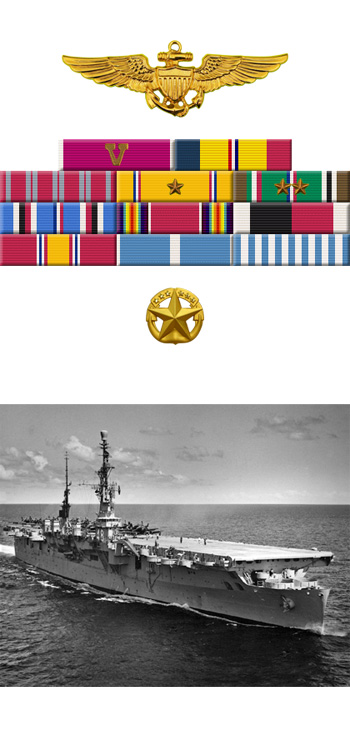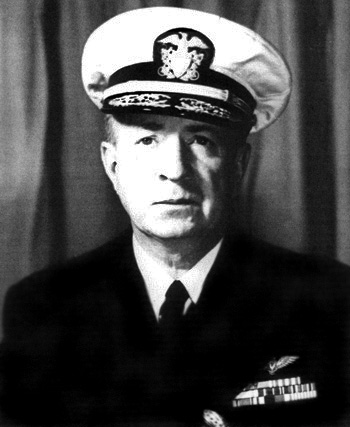
|
Ralph W. D. Woods |
 |
|||
| Rank, Service | ||||
Rear Admiral O-8, U.S. Navy |
||||
| Veteran of: | ||||
|
||||
| Tribute: | ||||
Ralph Woods was born on May 4, 1902, in Chicago, Illinois. He entered the U.S. Naval Academy on June 18, 1919, and was commissioned an Ensign at graduation on June 7, 1923. His first assignment was aboard the battleship USS West Virginia (BB-48) during her fitting out and later after she was commissioned, from June 1923 to May 1924, followed by service aboard the battleship USS Arkansas (BB-33) from May to December 1924. He next completed torpedo school before serving aboard the light cruiser USS Cincinnati (CL-6) from June 1925 to July 1926. LTJG Woods then began flight training at NAS Pensacola, Florida, where he was designated a Naval Aviator in November 1927. His first flying assignment was with VT-9S from November 1927 to May 1930, followed by service at Fleet Air Base Coco Solo, Panama Canal Zone, from June 1930 to June 1932, during which time he participated in operations during the 2nd Nicaraguan Campaign in 1931. LT Woods next served with VS-2B aboard the aircraft carrier USS Saratoga (CV-3) from July 1932 to December 1934, and then with VS-3B aboard the aircraft carrier USS Lexington (CV-2) from December 1934 to June 1935. He served with VP-6F at Pearl Harbor, Hawaii, from July 1935 to May 1937, and then with VS-4B aboard USS Saratoga from May to July 1937. During July 1937, he participated in the search for Amelia Earhart and Frank Noonan in the South Pacific Ocean. LCDR Woods served with VS-42 aboard the aircraft carrier USS Ranger (CV-4) from July 1937 to June 1940, having commanded the squadron from January 1939 to June 1940. He next served at NAS Pensacola from June 1940 to August 1942, followed by service with Amphibious Force, Atlantic Fleet, from August 1942 to October 1943. During this time, Capt Woods participated in the invasion of North Africa. He commanded the escort carrier USS Charger (CVE-30) from November 1943 to August 1944, and then commanded NAS Daytona Beach, Florida, from September 1944 to October 1945. Capt Woods served as commanding officer at the Navy Pre-Flight School at St. Mary's College, California, from November 1945 to May 1946, and then commanded the the U.S. Naval Operation Base and Naval Air Station at Midway Island from June 1946 to August 1947. His next assignment was with Headquarters U.S. Navy at the Pentagon from October 1947 to November 1950. Capt Woods served as commanding officer of the light aircraft carrier USS Saipan (CVL-48) from December 1950 to November 1951, and then served as commanding officer of Utility Wing, Pacific, from December 1951 until his retirement from the Navy on July 1, 1953. Ralph Woods died on August 10, 1982, and was buried at the Fort Rosecrans National Cemetery in San Diego, California. |
||||
|
||||

